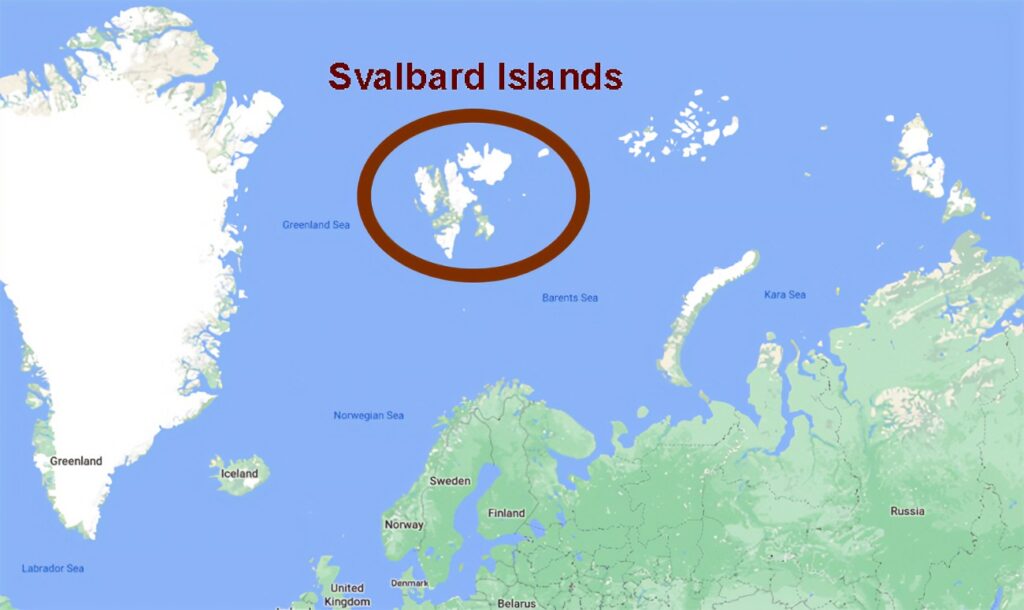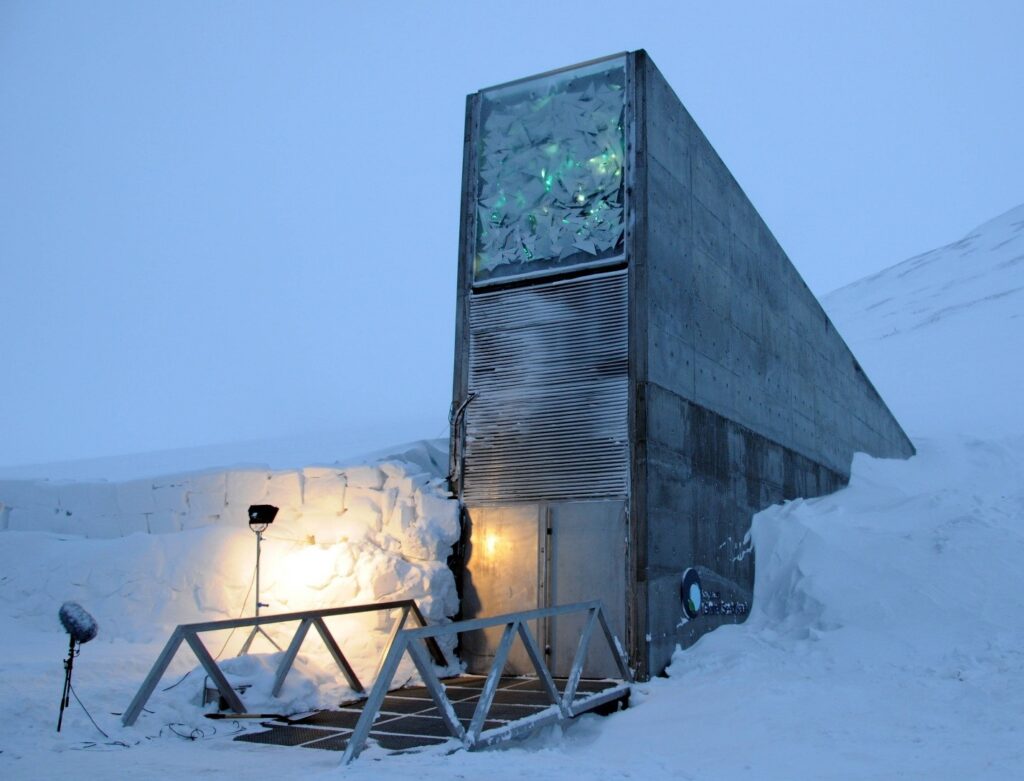Svalbard
Grades 4+
 Svalbard is a series of remote islands. About midway between Norway and the North Pole, it is the northernmost settlement in the world.
Svalbard is a series of remote islands. About midway between Norway and the North Pole, it is the northernmost settlement in the world.
Fewer than 3000 people – along with polar bears and Arctic foxes – live in its harsh climate.
It also holds one of the world’s most important buildings.
The building is large, white, and rectangular and is embedded in a hillside, a giant block of concrete sticking out of the ice. This is the entrance to the Global Seed Vault.
Only a handful of people, all of them scientists, are allowed within. But today, you have been granted access.
“Ready?” your guide asks.
“I am,” you reply.
The two of you enter. It’s even colder inside than out in the Arctic. That’s because the inside forms a cold trap – that is, the cold is trapped within the concrete walls.
You walk down a long, long slanted hallway. It descends deeper and deeper into the earth. You come to large doors. Once inside, the place is even colder. Then there’s another long hallway. Deeper and deeper you go.
When you are 100 meters down into the earth, you come to three doors. There is one at the end of the hallway and one on each side. Only the one on the left is being used, your guide tells you.
 Within are metal shelving that holds hundreds of plastic tubs. Within each tub are packages of seeds. The Global Seed Vault is a storehouse for seeds from all over the world. There are more than a million seed samples of major food grains, vegetables, and tuber plants such as potatoes. Each type of plant is represented by dozens of varieties.
Within are metal shelving that holds hundreds of plastic tubs. Within each tub are packages of seeds. The Global Seed Vault is a storehouse for seeds from all over the world. There are more than a million seed samples of major food grains, vegetables, and tuber plants such as potatoes. Each type of plant is represented by dozens of varieties.
These seeds are stored behind a thick layer of permafrost and rocks, at a constant temperature of −18°C. Here they will be safe from natural disasters, war, and other threats. The Seed Vault is a backup for the world’s food supply. It helps ensure that we can continue to grow crops in case something terrible happens to plants that feed humanity.
Svalbard Activity 1
1. Use Control F to find am and be. Put a space before and after the words. Circle or highlight them.
2. Use Control F to find to. Put a space before and after the words. Circle or highlight them.
3. Examine each to. Is it a verb or not a verb?